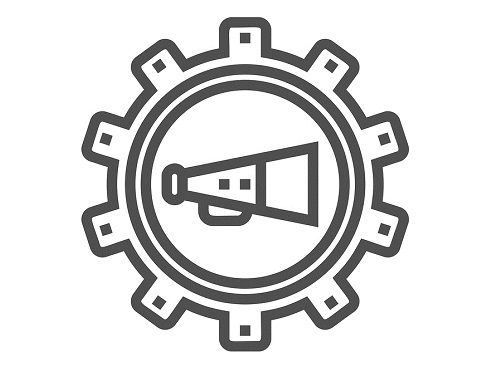By: Noha Abou-Hashima
- Content Marketing and Data Collection For the past few years, digital marketers focused on tailoring their content (advertisements, promotions, emails, social media posts, etc) to their consumer base with the help of data mining. According to data from Smart Insights, content marketing remains the number one digital marketing technique preferred by marketers.
- Mobile
- Marketing Automation
Although personalized marketing is not new, marketers in 2017 have shifted their focus from creating static content to generating interactive content that engages their audience and provides them with a more meaningful experience online. Research by Content Marketing Institute shows that almost half (46%) of marketers used interactive content early in 2017. Used by 52% of marketers, infographics were the most popular type of interactive content in 2017. Infographics were mainly used for content marketing purposes, as a way to make large amounts of information more palpable and interesting. However, in terms of achieving content marketing objectives, contests were rated as being the most effective during the first stage of awareness/discovery.
Below are some examples of interactive infographics, including ones created by renowned companies like Ferrari.
Music Map
 |
| Compiling years' worth of research, this colorful and interactive infographic attempts to offer a comprehensive genealogy and history of popular music genres. |
Inforacing: 2015 Season
 |
| Ferrari's infographic, titled Inforacing 2015, tells the history of the 2015 Formula 1 season, listing countries raced and champions. |
Although mobile web use has been around for some time, usage and monetization have significantly increased in the last couple of years. According to research by We Are Social, 67% of the world's population now uses mobile phones, and over 50% of web traffic is generated by mobile users. So it wasn't surprising when Google announced their plan last year to prioritize mobile search results over desktop. Or was it?
Although Google has been experimenting with a mobile-first index for some time, their final decision to make it a priority was not supported by everyone. Dave Chaffey, CEO and co-founder of Smart Insights, said that Google's decision is "a somewhat misleading mantra" citing the reason that desktop and laptops are still widely used. He points out that users utilize different devices at different stages, thus, from his perspective, treating mobile as part of a multi-platform strategy is a better alternative.
Another marketer who isn't fully on board with Google's mobile-first strategy is from the UpOnline family, Ryan Sugar. Citing 'narrow definitions' and 'taking away user and designer choice', Ryan ultimately objects to Google's monopoly on what constitutes a mobile site. He argues that sites should not be penalized for not having a mobile-optimized version, or even for using features not supported by Google, like Flash. As he puts it: "Google dictates, and we follow".
In the retail world however, Amazon is the giant that dictates the rules of the market.
As e-commerce becomes more popular thanks to online retailers like Amazon (56% of online shoppers begin their product search on Amazon) we're starting to see an increase in M-commerce as well: shopping using a mobile device. In 2017, 44% of online shoppers used their mobile devices to research products, and 37% ended up making a purchase. Even while shopping in-store, 75% of customers used their mobile phones to research the store's products.
In order to stay in the competition, brick-and-mortar retailers turned to beacon technology to enhance their customers' in-store shopping experience. Beacon devices allow retailers to send personalized content to their customers' mobile devices as they shop. These tiny, Bluetooth operated devices were utilized by up to 75% of retailers in the U.S. this year.
Over 51% of businesses currently use marketing automation, and it's not surprising. Content is a big deal to digital marketers, and it relies heavily on large amounts of data collected from millions of users worldwide to deliver personalized, meaningful content and increase conversion rates. In order to save on the costs associated with creating and manage marketing campaigns, and to increase revenue and ROI, companies turn to marketing automation software.
Marketing automation tools like HubSpot, Marketo, Salesforce, and Oracle Eloqua, to name a few, allow marketers to organize and manage marketing campaigns, as well as track and analyze customer data (also known as Customer Relationship Management). Although many options exist on the web, the price tag can deter some of the smaller companies, or those with a limited marketing budget. Marketing automation software generally ranges from the low thousands per month, to costing millions of dollars per year. The marketing automation platform you use will depend on your company’s needs and marketing goals.
But even with such great tools, many companies may not have the time or resources to manage marketing technologies. In that case, "it makes sense for these companies to outsource to a marketing operations agency", says Macromator’s Dan Radu. Among their many services, Macromator provides marketing automation consultation services, and manages marketing campaigns.
With how fast the digital world continues to move, we need to be vigilant in our attempts to stay up to date to continue to maximize benefits and obtain the best return on our marketing dollars.
This article provided a peek into the trends of this year, but it hardly scratched the surface. There are many popular tools and marketing techniques out there, and the rest of 2017 and start of 2018 are likely to add onto the pile. To stay informed on the latest digital marketing trends and news, follow our blog at UpOnline.






